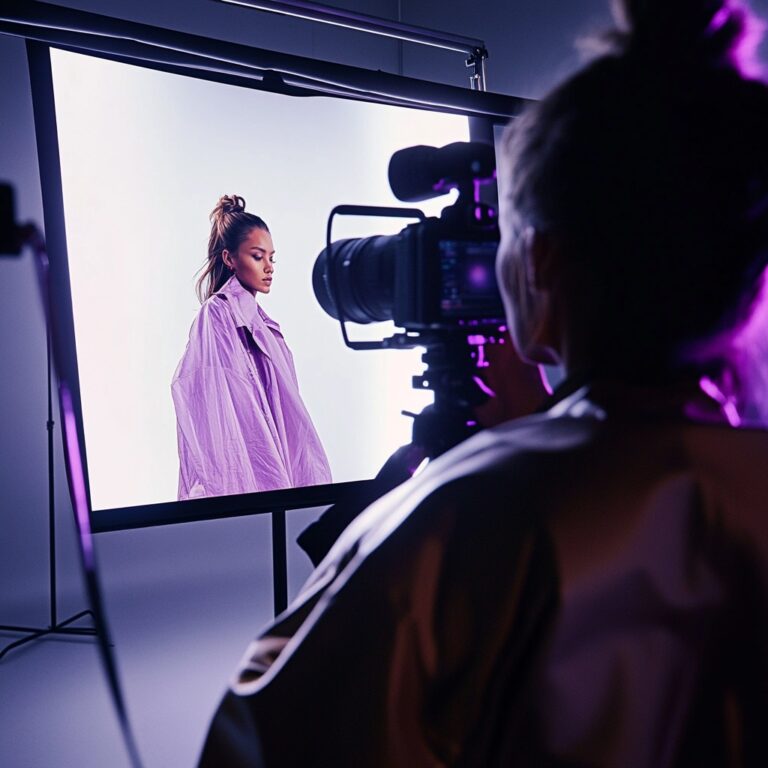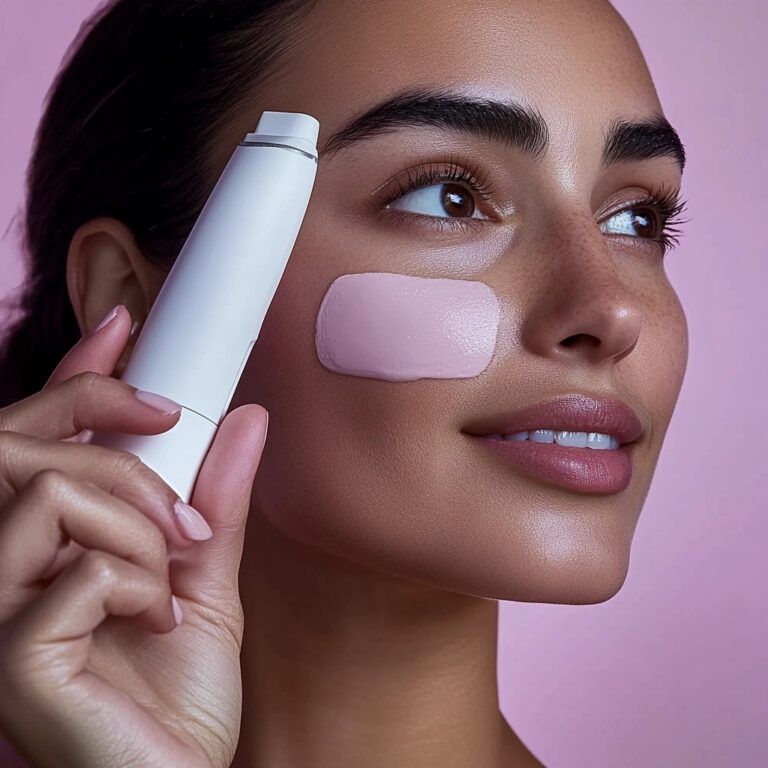The Impact of Video in Your Marketing Strategy

Year over year, we’ve seen the value and need for the use of video marketing for business increase and the trend has continued strong in 2025. The impact of video on businesses has made it clear for brands that video isn’t just one small piece of the puzzle, or an ad hoc initiative potentially worth considering —video is an essential driver of a brand’s success and should be at the core of any effective marketing strategy.
What is Video Marketing? Understanding Its Full Scope
At its core, video marketing is the use of video content to promote a brand, product, or service. But it’s not just about creating a polished commercial. Modern video content marketing includes everything from live streams and social media stories to customer testimonials and product demos.
Where Does Video Fit in Digital Marketing?
- Social Media Marketing: Videos on platforms like TikTok, Instagram Reels, and YouTube Shorts capture attention quickly.
- Email Marketing: Embedding video in emails can boost open rates and increase conversions.
- SEO & Website Content: Videos improve dwell time and increase the likelihood of appearing in Google’s featured snippets.
- Paid Advertising: Video ads on Facebook, Instagram, and YouTube drive higher engagement than static images.
A recent study found that 93% of marketers say video is an important part of their marketing strategy, and 78% of marketers report that video marketing has improved their company’s bottom line. With the competition being what it is in today’s digital space, if you or your digital marketing agency aren’t using video at this point, your brand is losing out on important opportunities.
Among one of its strongest benefits is the versatility of video, and the opportunity to make a positive impact on any business. The medium can be translated across every industry, and used across any social media platform to bolster whichever channels are core to your brand’s marketing strategy, from email to social and even SEO. It’s been proven to improve open rates, click through rates as well as reduce unsubscribes and generates 1,200% more social shares more than static texts and images; it increases web traffic and conversion rates, sometimes up to 86% when included on a landing page design; it allows for more backlinks when embedded onto a webpage and improves your site ranking on search engines; and it also impacts performance on social.In addition to boosting engagement, 64% of consumers saying that watching a video marketing campaign on Facebook has directly influenced their purchasing decision.
Much of the reason video has the ability to impact a brand’s bottom line so profoundly is because it allows them to connect with consumers in a much more personal, intimate way than ever before. Video lets you engage with your audience and showcase your personality in a creative manner, educate them about your business, provide value through entertainment, and promote important campaigns and products, all the while humanizing the brand and establishing credibility and trust with your end user.
Benefits of Video Marketing for Your Business
Video marketing brings a valuable human element to your brand. People want to know not only what they are buying, but who they are buying. They need to imagine themselves using your product or service, and there’s no better way to create that connection than with video marketing. Not only does video bring to life that human connection that a static ad may often lack, it also allows you to communicate your brand voice. The power that a few moments of video marketing can do is truly unmatched in today’s digital world.
Similar to brand voice, video also allows you to create a vibe, to set the scene that really sells your product or service. In our current times, people want their information fast and effortlessly. Video is one of the most powerful ways to spread brand awareness at the top of your marketing funnel. Video creates a sense of physical existence. It quite literally brings your product or service to life in the eyes of your potential customer. When so many people have moved to purchasing online, the bond you can create through video is unmatched in telling your brand story.
High-quality production in your video marketing tells your customer that you’re the real deal. Investing in a branding or design agency’s resources can help you with just this. It shows that as a brand, you understand the importance of showing the experience of your product, and it creates an even deeper bond between you and your potential customer. Seeing a thoughtful and polished video tells the customer that you’ve taken that extra step to show them the value that you offer. It elevates the perceived quality of your brand, and it brings the user into your world.
Not all video content serves the same purpose. To maximize impact, brands should leverage different formats based on their goals and audience.
Explainer Videos: Educate and Inform
- Short, engaging videos that break down complex topics into easy-to-understand concepts.
- Often used in B2B marketing, SaaS companies, and service-based industries.
Product Demos: Showcase Features in Action
- Walk-throughs that demonstrate a product’s functionality and benefits.
- Perfect for eCommerce brands looking to reduce uncertainty and boost conversions.
Customer Testimonials: Build Trust and Credibility
- Real customers sharing authentic experiences with a product or service.
- Increases consumer trust and social proof, leading to higher conversion rates.
Video content has the opportunity to educate users throughout the marketing funnel and in the process builds trust and credibility. We recommend showcasing education and brand introduction videos to users at the top of the funnel who have never heard of the brand. Once they have watched the video, we like to showcase social proof — testimonial or influencer video — to showcase a third-party review of the brand or the product. Once they know the brand, know people like the brand we recommend showcasing an incentive to buy. This could be a percentage off a product, free shipping, BOGO, etc.
Nurturing these customers through video marketing helps brands give a different way to share information rather than the user having to do their own research.
When a user grows their trust, they also become loyal to that brand. Brand loyalty is one of the most valuable assets you can earn from your audience. It allows your customers to feel comfortable with your product or service, which in return will make them a repeat purchaser.
It’s not too hard to see why video content is so popular these days.Videos are a versatile and engaging content format that is easy-to-digest and informative.
Utilizing Video
So what does it take to create an informative and powerful piece of video marketing?
Product demos are one way to educate potential customers and a unique opportunity to demonstrate the value of your product to a prospective customer. Demos lets your prospects understand how your product is the solution that will truly solve their pain points and enable them to become more successful.
In a society of “influencer” mistrust and fake news, customer testimonials and reviews will add value and proof to your brand. Reputation is everything, and when a brand is able to build trust and credibility with its prospects and consumers, it will humanize the brand and help increase conversions.
Branded videos focusing on the business model and history of the company are a great way to inform and gain the trust and respect of the prospective customers, investors, and employees. Finding unique and compelling ways to introduce this information will help your business stand out among the rest. It is not enough to have a service or product that only solves a problem. Using storytelling in video format helps the audience to connect with a brand on a level that is very relatable. Once the audience can see themselves in the story, it is easier for the audience to trust the brand.
Educational videos are a great way for potential customers to gain valuable information. Consumers like it because it’s easy to digest and entertaining, while marketers like it because it can potentially give a return on investment (ROI) through many channels.
The combination of entertainment and education in video format is a great tool. If created correctly, brand videos can be an incredibly powerful educational tool to add success to any business.
It is no overstatement that in today’s society, social media has become an increasingly dependent source for information, news, and entertainment. According to Andrew Keller, Global Creative Director at Facebook, the average person scrolls through 300 feet (equivalent to height of the Statue of Liberty) of mobile content everyday. Because of this fact, it is crucial for your content to be thumb stopping, and videos are an effective way to increase those odds.
A recent study showed that consumers are able to process a thought from an image in 0.013 seconds (M.I.T 2014 “In the Blink of an Eye” Study). That number continues to decrease as our minds are able to digest more and more visual information. Keeping this in mind, a user scrolling through a feed and viewing a static ad will have a higher possibility of quickly scrolling right past after they have processed it.
With video, businesses have a higher chance of increased engagement because users aren’t able to process the full story until they view the video in its entirety, making them more thumb stopping. Video ads are also characterized by motion graphics and moving images which already make the visuals more interesting and engaging.
Recent studies show that Facebook video ads had two times the increase in clicks, conversions increased by 20-30%, and had two-to-three times higher click-through rates (adquadrant.com, Facebook Advertising, October 28, 2020 “Videos Ads vs. Images: What Drives More Engagement with Facebook?”).
Given all of the above information, If you’re looking to increase engagement and conversions of your online content, incorporating video ads might be the solution for you!
How to Start Using Video Marketing for Your Business
To make sure your video marketing strategy is set up for success, planning is key. Video production, even on a small scale, is resource intensive and can leave significant room for error without a solid plan.
First, you want to identify who your business wants to reach and gather insight on your target audience. Think of factors such as what channels your target audience uses to view video content. What types of videos does your audience consume? How can you make your target audience feel like your video speaks to them and their needs?
For example, a beauty brand may utilize short-form videos on Instagram of product swatches, tutorials, or unboxing new products. Meanwhile, a technology-focused business may perform better with long-form educational videos, product reviews, or demonstrations on YouTube. Understanding your audience and how to communicate with them can make or break your video marketing strategy.
Once you know your target audience, it’s time to develop your video goals. What do you want to accomplish with your videos? Whether you want to drive leads through your sales funnel via Instagram ads, continue organic engagement, or increase brand awareness, it all impacts your video messaging, footage type, length, etc.
With your goals and target audience in place, you can start the preproduction process – that is, plan and prepare any and all resources you will need for your video. The most important factor to consider in this beginning stage is your budget and ensuring it aligns with your goals.
In this preproduction stage, you will need to determine the style and messaging of the video, write a script, find shooting locations, prepare a storyboard and shot sheet to outline the sequence of the video, and more. As this can be a large undertaking, this is also a good time to decide if you want to outsource your video creation (and which stages you want to outsource).
For example, you may want to work with a third party throughout the whole process to execute your vision. Or, you may decide to outsource only the video shoot itself or the video editing in post-production.
The preproduction phase is also when to plan out any equipment, props, and personnel you will need for your video shoot. Depending on your budget, this can even be as simple as a smartphone and three-piece lighting kit from Amazon.
During your video shoot, you will execute the plan you determined during pre-production. While this will vary depending on the scope of your project, it can be broken down to a few fundamentals – lighting, camera, audio, and talent. You will have to light your subjects and the location, organize the shots you planned using the shot sheet, and set up any external audio recording equipment, if applicable.
Now that you’ve planned the logistics of your video, it’s time to shoot it. This stage of content creation will vary drastically depending on your budget, manpower, and time. However, the goal for any video should be to execute the vision and processes established during the pre-production stage.
As a general rule of thumb, there’s no such thing as being overprepared for a shoot. It’s better to have too many charged batteries, lights, or an extra set of hands than discover halfway through the day that you don’t have the right resources.
After the filming of your video, the post-production stage begins. Regardless of the editing software used during this phase, the key to a smooth process is file organization and backing up files. You should be able to easily access any video file provided from the shoot and have secure backup files in case of accidentally deleted files, file corruption, etc.
The editing of your video is largely determined by the messaging, style, and tone established during the pre-production phase. Additionally, any notes from the production day, such as a good shot or on-set errors, should be taken into account. These factors should influence the types of transitions and pacing, music, and any motion graphics.
Finally, where you plan to show your video will impact how you edit it. For example, videos made for Instagram or Facebook might be shorter and play in a mobile-first aspect ratio (such as 1080×1080 or 1080×1920).
Once you and your team are satisfied with the final video, it is ready to be published. The distribution phase of a video should be as well thought out and strategic as its production.
When, where, and how a video is promoted impacts how successful it will be.
Measuring the Impact
Once your video is published and the marketing campaign is live, there are some metrics you can keep an eye on that will ultimately help measure the video’s overall success. Depending on the initial goals of the campaign, success might look different for each use case. The general metrics include view count, click-through rate, shares, and overall conversion rates.
As you gather this data, depending on the results, you will be able to see what strategies worked and what strategies did not. Whatever the outcome, this process will not only strengthen your knowledge of what a successful video looks like, but it will also lay the foundation for videos to come and ultimately improve efficiencies as you continue to build your video campaigns.
The Future of Video Marketing: What’s Next?
With rapid advancements in technology, video marketing will continue evolving. Here’s what’s on the horizon:
1. AI-Generated Video Content
- AI tools like Synthesia and DeepBrain AI are revolutionizing automated video production.
- Expect hyper-personalized AI-driven video experiences in the coming years.
2. Interactive Video Experiences
- Clickable, interactive videos will allow viewers to engage with brands directly within the content.
- Expect shoppable videos, branching storylines, and interactive learning content to become mainstream.
3. Augmented Reality (AR) & Virtual Reality (VR) Videos
- AR-powered videos (like Instagram’s AR filters) create immersive brand experiences.
- VR marketing is gaining traction in real estate, automotive, and gaming industries.
4. Sustainability-Focused Video Marketing
- Consumers are demanding eco-friendly production and ethical brand storytelling.
- Brands will increasingly highlight corporate responsibility through authentic video campaigns.
Video Marketing is No Longer Optional
Video marketing is one of the most effective tools for driving engagement, building brand trust, and increasing conversions. As AI, AR, and interactive content continue shaping the industry, brands that embrace these innovations will stay ahead of the competition.
Ready to take your video marketing strategy to the next level? Contact Power Digital Marketing today for expert guidance on creating high-converting video content!
Our Editorial Standards
Reviewed for Accuracy
Every piece is fact-checked for precision.
Up-to-Date Research
We reflect the latest trends and insights.
Credible References
Backed by trusted industry sources.
Actionable & Insight-Driven
Strategic takeaways for real results.

















